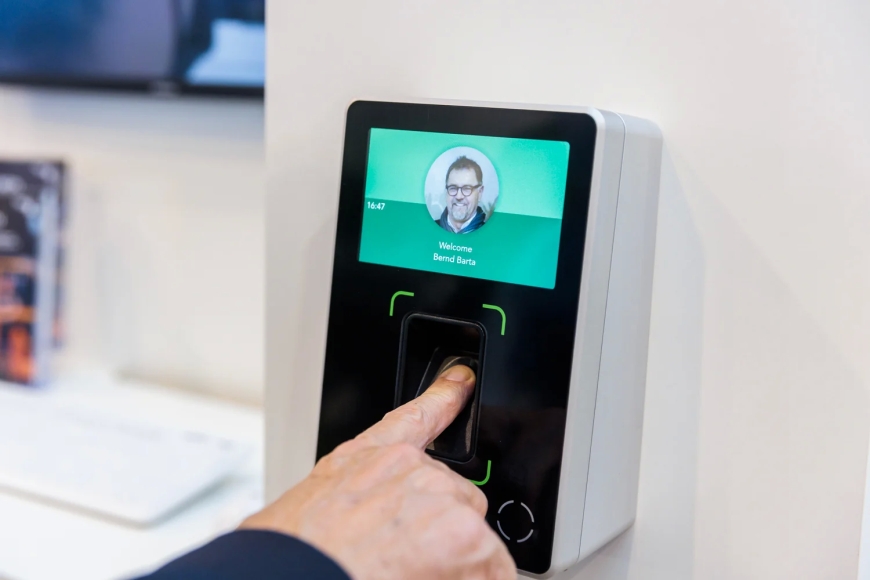Enhancing Workplace Efficiency with Biometric Attendance Management

In today's fast-paced world, businesses are constantly seeking innovative solutions to streamline operations and boost productivity. One area ripe for transformation is attendance management. Traditional methods like manual timekeeping, punch cards, and even digital time clocks have their limitations, often leading to inaccuracies, buddy punching, and administrative burdens. Enter biometric attendance management – a cutting-edge solution that leverages unique biological characteristics to ensure accurate, secure, and efficient tracking of employee attendance. This guest post delves into the intricacies of biometric attendance management, its benefits, implementation strategies, and future prospects.
Understanding Biometric Attendance Management
Biometric attendance management systems use physiological or behavioral characteristics to verify an individual’s identity. Common biometric identifiers include fingerprints, facial recognition, iris scans, and voice recognition. These systems work by capturing an individual’s unique biometric data and storing it in a database. When an employee clocks in or out, the system compares the new biometric input with the stored data to confirm their identity, ensuring precise attendance records.
Benefits of Biometric Attendance Management
-
Accuracy and Reliability Biometric systems eliminate errors associated with manual timekeeping and traditional punch cards. Since biometric data is unique to each individual, it ensures that the recorded attendance is accurate and reliable, reducing discrepancies and payroll errors.
-
Enhanced Security Traditional attendance systems are susceptible to fraud, such as buddy punching, where one employee clocks in or out for another. Biometric systems mitigate this risk as they require the physical presence of the individual, enhancing overall security and integrity.
-
Streamlined Payroll Processing Accurate attendance data simplifies payroll processing by providing precise work hours, reducing the administrative burden on HR departments. This leads to more efficient payroll calculations and timely salary disbursements.
-
Cost Savings By minimizing time theft and administrative overhead, biometric systems can lead to significant cost savings. Companies can reinvest these savings into other areas of the business, driving growth and innovation.
-
Improved Employee Accountability With biometric systems, employees are held accountable for their attendance. This fosters a culture of punctuality and responsibility, ultimately contributing to a more disciplined and productive workforce.
Implementing Biometric Attendance Management
Implementing a biometric attendance management system involves several steps to ensure its effectiveness and acceptance within the organization.
-
Needs Assessment Conduct a thorough assessment of your organization’s needs. Consider factors such as the number of employees, work shifts, existing attendance systems, and specific requirements like remote or field employees. This helps in selecting the most suitable biometric technology.
-
Technology Selection Choose the appropriate biometric technology based on your needs assessment. Fingerprint scanners are popular for their cost-effectiveness and ease of use, while facial recognition systems are ideal for environments where hands-free operation is necessary. Iris and voice recognition are other options, though they may require more advanced infrastructure.
-
Vendor Evaluation Evaluate and select a reliable vendor with a proven track record in biometric systems. Consider factors such as system compatibility, scalability, customer support, and maintenance services.
-
System Integration Integrate the biometric system with your existing HR and payroll software. This ensures seamless data transfer and automates the attendance tracking process. Work closely with your vendor to ensure smooth integration and minimal disruption to ongoing operations.
-
Employee Training and Engagement Conduct training sessions to familiarize employees with the new system. Address any concerns or apprehensions they may have regarding privacy and data security. Engaging employees early in the process helps in gaining their acceptance and cooperation.
Future Prospects of Biometric Attendance Management
As technology advances, biometric attendance management systems are poised to become even more sophisticated and integrated. Here are some future trends to watch:
-
Multi-Modal Biometrics Future systems may incorporate multiple biometric modalities for enhanced accuracy and security. Combining fingerprints with facial or voice recognition can provide an additional layer of verification, reducing the risk of spoofing or errors.
-
AI and Machine Learning Integration Integrating AI and machine learning can improve the system’s ability to recognize individuals accurately under varying conditions, such as changes in appearance or lighting. AI can also help in predictive analytics, identifying patterns and trends in attendance data.
-
Cloud-Based Solutions Cloud-based biometric systems offer scalability, remote access, and easier maintenance. They can provide real-time data analytics and integration with other cloud-based HR and payroll systems, enhancing overall efficiency.
-
Wearable Biometric Devices Wearable devices equipped with biometric sensors can provide continuous and seamless attendance tracking, especially useful for remote or field employees. These devices can also monitor other aspects like health and productivity.
-
Blockchain for Data Security Blockchain technology can enhance the security and transparency of biometric data storage and management. It can ensure that data is tamper-proof and provide a clear audit trail, boosting trust and compliance.
Conclusion
Biometric attendance management systems represent a significant leap forward in workplace efficiency and security. By leveraging unique biological characteristics, these systems provide accurate, reliable, and tamper-proof attendance tracking, reducing administrative burdens and fostering a culture of accountability. As technology continues to evolve, the integration of AI, multi-modal biometrics, cloud solutions, wearable devices, and blockchain will further enhance the capabilities and benefits of these systems. For organizations looking to streamline their operations and improve productivity, investing in biometric attendance management is a forward-thinking move that promises substantial returns.
What's Your Reaction?





















